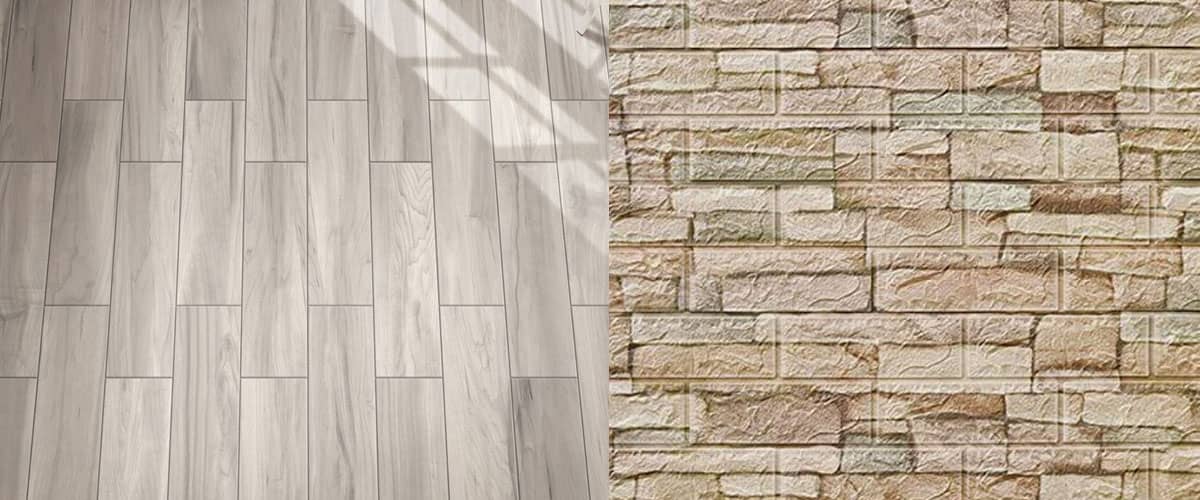Difference Between Floor Tiles and Wall Tiles

In residential and commercial buildings tiles are used in indoor and outdoor areas. The installation of tiles also boosts the maintenance period of surface area. There are many types of tiles available in the market.
Nowadays tiles are a very important part of home decoration. Tiles are thin decor elements which are used to cover building surfaces like walls, floors, roof.
Types of tiles may depend on the types of the surfaces.
Differences
- Wall tiles are used in walls and floor tiles are used in floors. Wall tiles are glazed tiles and are used for decoration purposes.
- Floor tiles should have a minimum level of friction to walk on safely. This minimum level of friction is called the Coefficient of friction or COF. on the other hand wall tiles should be made as slick as glass.
- PEI rating stands for porcelain enamel institute. This rating defines hardness and flexibility.
- COF of floor tiles is 0.50 or greater than that and COF of wall tiles can be any rating. PEI rating of floor tiles is 3 to 5 and PEI rating of wall tiles can be any rating.
- Ceramic and porcelain based wall tiles are good resistant against water. On the other hand wall tiles are thinner than floor tiles. Wall tiles are also less resistant against water.
- The glazed which is used in tiles are also different for wall and floor tiles.
- Tiles can be made of clay and different types of glaze.
- Floor tiles can be used in walls but wall tiles can not be installed on the floor.

Durability and maintenance of wall tiles
Thickness of wall tiles is thinner than floor tiles. Wall tiles should not be used in floors for less thickness. If wall tiles are used in floor tiles then it can be cracked due to foot pressure. This type of wall tiles are very flexible and very easy to maintain.
This type of floor tiles generally stronger than wall tiles and it is suitable for either floor or wall installation.
- Class 0 is not suitable for foot pressure so it can be installed on walls only.
- Class i is suitable for very light pressure because this can be scratched very easily.
- Class ii is suitable for wall tiles.
- Class iii are suitable to moderate the traffic.
- Class iv is suitable for both commercial and residential buildings.
- This type is very suitable for heavy traffic like shopping centers, commercial areas, hotel lobbies and industrial workplaces.
Installation cost of tiles
At first the cost of tiles installation can be measured by the quantity of tiles required for specific rooms. Now wall and floor tiles can be installed with the readymade tiles.
If the users use cement and sand mortar means if they follow the traditional process then they have to find the tiles installation cost as per the standard specifications.
If users use less amount of mortar in the tile installation process then the installation cost is also reduced. The life span of wall tiles is bigger than floor tiles. The life span of wall tiles is minimum 75 years.
Durability
Floor tiles are more flexible than the wall tiles. Floor tiles can take more pressure than wall tiles. Wall tiles require lower maintenance cost and it can be easily cleaned with water and soap. Floor tiles require a greater level of maintenance. It also requires special detergents.
To sum things up
In this article we discussed the difference between wall tiles and floor tiles, definitions, installation cost, manufacturing in this article elaborately.
